One of the samples I was fortunate to acquire in Texas was this extraordinary thing:
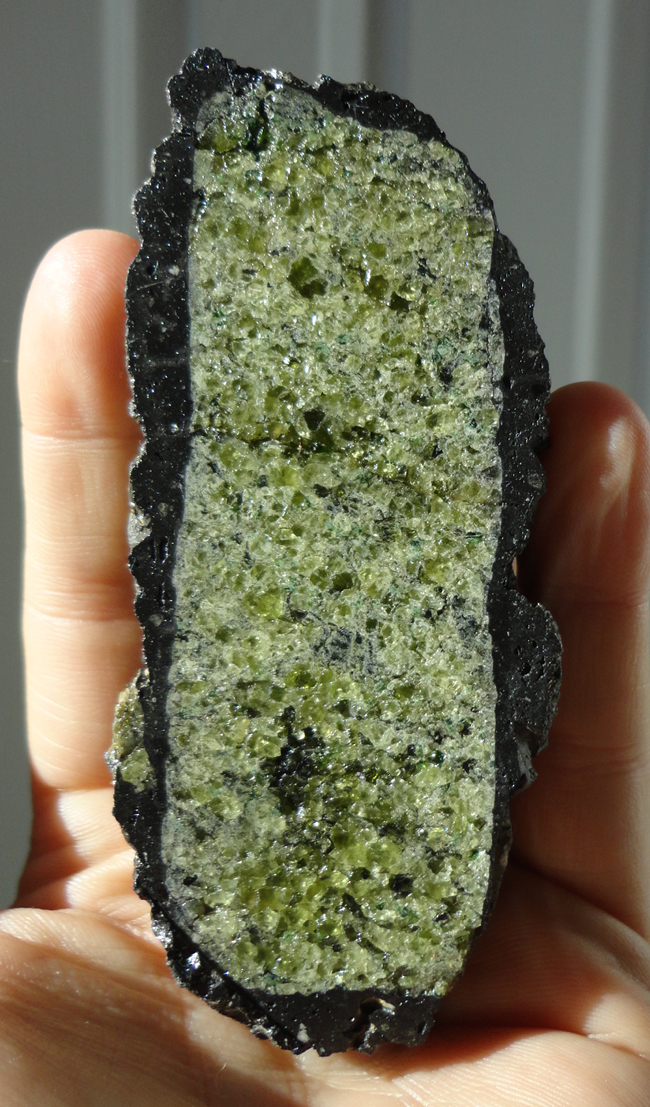
Rotated 90° to the right:
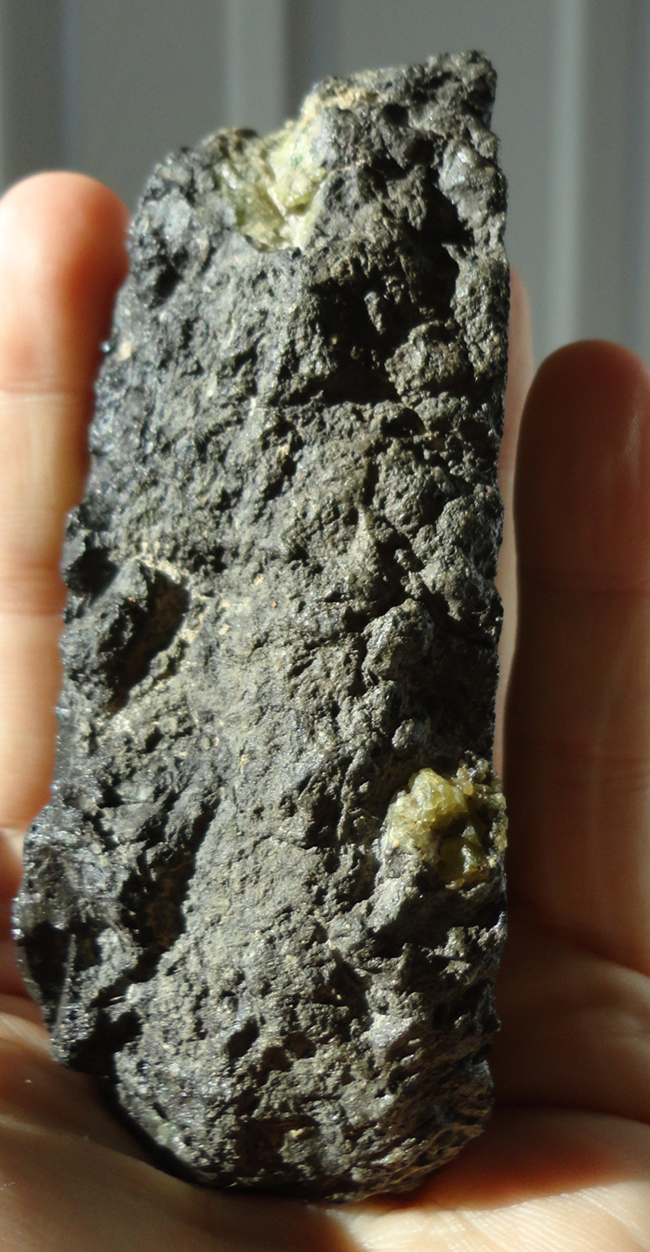
And then rotated another 90° to the right, so now you’re looking at the opposite side relative to the first shot:
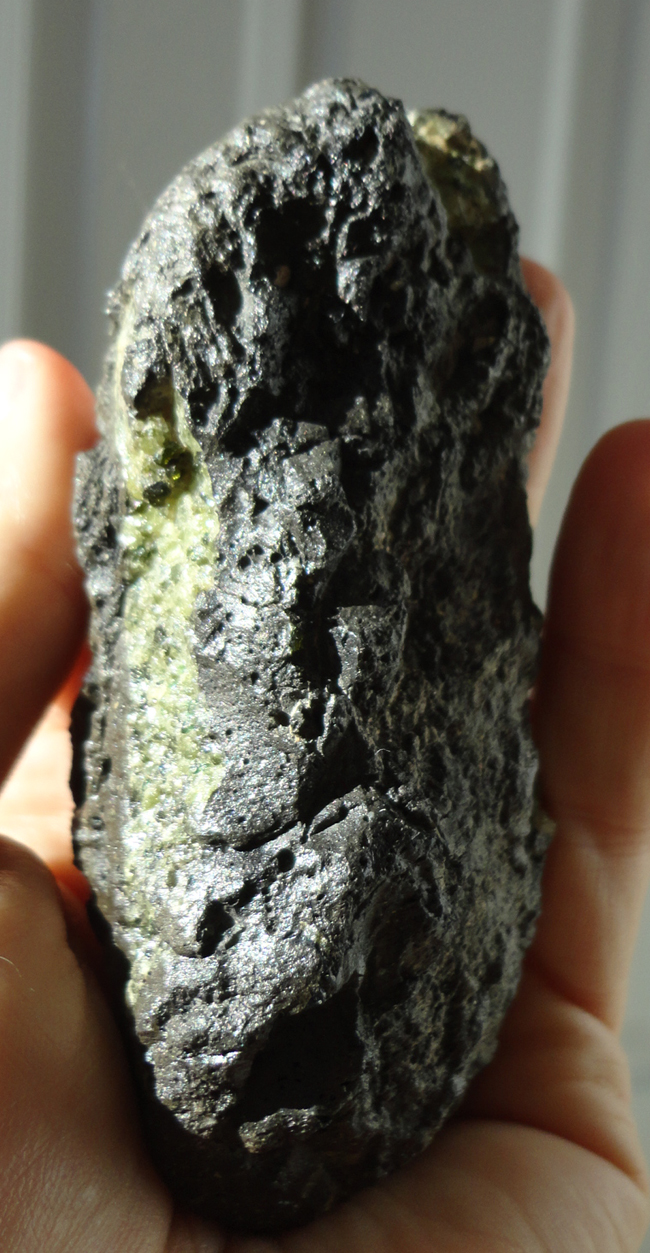
This was not a sample I found personally, but one that was collected by Josh Villalobos of El Paso Community College. He sawed it in half, gave it a coat of shellac, and then gave half to me, and half to Elizabeth Nagy-Shadman on our field trip the week before last. The sample was collected out at Kilbourne Hole, a maar volcanic complex west of El Paso, in southern New Mexico. Maars are big explosive craters that form when hot magma encounters groundwater, and steam explosions ensue. Chunks of rock and lava get flung through the air to land like geologic shrapnel around the hole.
Apparently what happened with this sample is that a xenolith of peridotite* (olivine-rich intrusive igneous rock) was tumbling along in the conduit of basaltic magma when the explosion occurred. It was flung through the air as a solid chunk surrounded by a coating of liquid mafic lava, which congealed and solidified as it traveled through the cold air, like a volcanic bomb. It landed, and eventually Josh found it, sliced it, and shared it.
Wild, right? It’s both a xenolith and a volcanic bomb. I hereby propose a new term for such a thing: I call it a xenobomb.
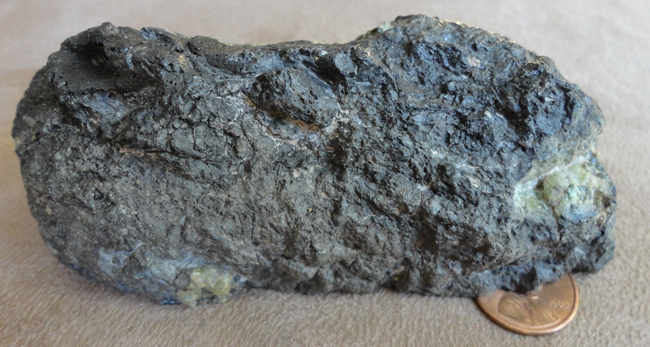
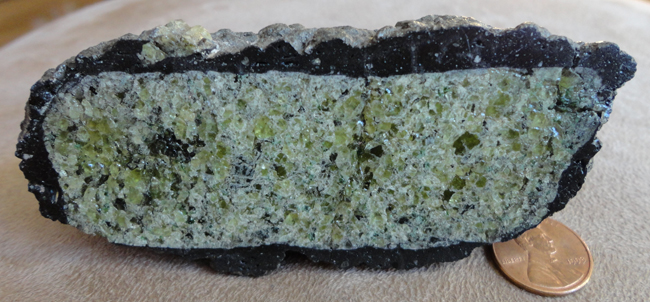
Similar xenobombs can be found at Kilbourne Hole of many other xenolith rock types, including migmatite.
It reminds me of a chocolate-covered almond.
____________________________
* Several sites online refer to these inclusions not as xenoliths but “giant crystals” of olivine. Others say they’re xenoliths. It’s clearly not a single coherent crystal – you can see the central portion of the xenobomb includes hundreds of 1mm – 2mm sized olivine grains. But are those actually separate crystals with independent nucleations and growth histories? (i.e., crystallization of an ultramafic magma, which then solidified into peridotite and had a chunk of that solid rock stoped off to be included in a later mafic magma?) Or are they clasts still in situ relative to the larger crystal they used to be part of? (In other words, does this represent a case of positive dilation and ensuing fracturing of a single original crystal into many fragments upon depressurization?) Is this just a case of people on the internet confusing minerals with rocks? That’s my bet.


Wow that’s SO COOL!!!!!!
That is a fantastic sample. It would grace anyone’s collection of desk crops.
Love that rock…. and its cool story.
Awesome. I take it you didn’t get a chance to visit Kilbourne Hole yourself? It’s an amazing location. These bombs really deform the tuff when they impact and create awesome structures. I was fortunate enough to visit my freshman year of college during a “short term” course in which we vanned around the southern Rockies doing mapping projects. I have to say, that course, Kilbourne Hole, and all the other amazing locations we visited turned me on to geology.
Hi Carter,
That’s right – we were prioritizing some other locations that day, so due to the remoteness of KH, we skipped it. But Josh brought KH to us with these two half-samples!
C
Oh man, way cooler than anything I collected at Kilbourne Hole. It’s a beautiful place: https://lh3.googleusercontent.com/–5JseyFPjO0/TrC0dIsLBnI/AAAAAAAAAGE/qLQgYnHmE9Q/s979/NM+119+Kilbourne+Hole.JPG
Thats freaking awesome!!
Beautiful
Those were not that hard to find (in specific places on) La Palma (Canary Islands) when I was there in ’99 for the Leonids storm.
I have recently started collecting Olivine. I have been getting it from Mount Gambier where I live. It’s great fun to find!
http://en.wikipedia.org/wiki/Mount_Gambier_%28volcano%29